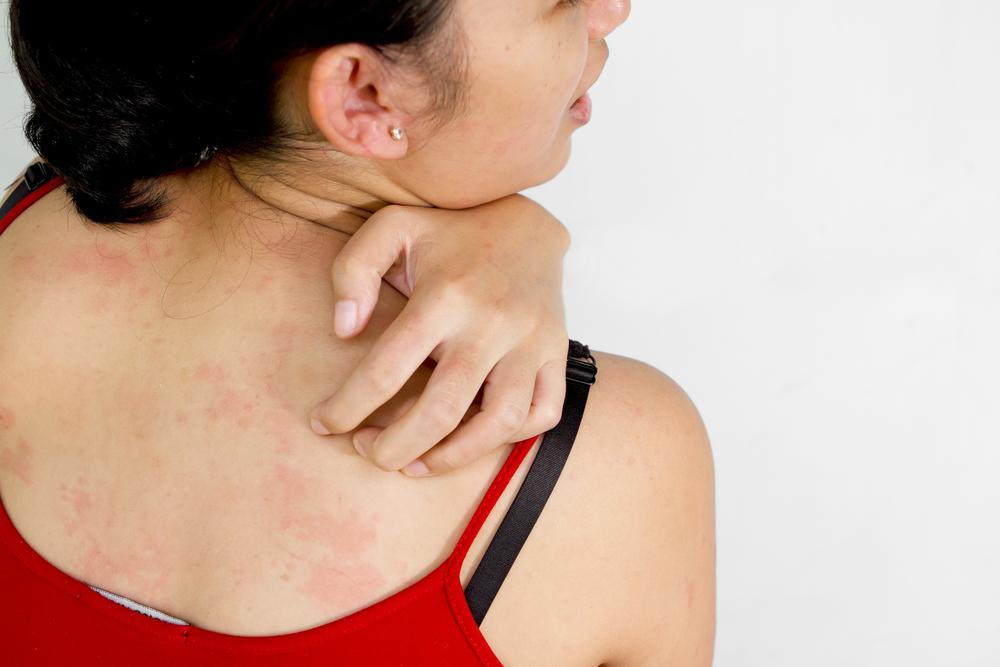Atopic Dermatitis- Causes, Symptoms And Treatment
Atopic dermatitis – Causes, symptoms, and treatment
Atopic Dermatitis is a type of inflammation of the skin that affects a large number of people across the world. It is also known as atopic eczema and is often associated with hay fever, asthma, and chronic dermatitis. In fact, 17.8 million people in the US are suffering from atopic dermatitis. It often appears on the cheeks, arms, and legs as a red itchy rash. Although common in children, it may affect a person at any age. Also, the condition is not contagious.
What causes atopic dermatitis?
Normally, the skin protects you from irritants, allergens and even bacteria.

Other causes may include genetics, exposure to the harsh environment, immune system dysfunction or permeability issues of the skin. Frequent washing of hands, living in areas having a dry climate may all contribute in causing atopic dermatitis.
What are the symptoms of atopic dermatitis?
In most cases, atopic dermatitis begins before the age of 5 and continues into adolescence and adulthood.
- Small bumps which may leak liquid on scratching
- Severe itching especially at night
- Dry skin
- Red or brownish-gray patches on the face and scalp of infants. In adults, eczema may affect the hands, feet, neck, eyelids, ankles, insides of elbows and knees.
- Thick, cracked and scaly skin
- Sensitive skin due to scratching
- You can look up for some atopic dermatitis pictures to have a better understanding of how it appears.
What are the complications associated with it?
Skin infections – Persistent scratching can cause the skin to break and produce cracks and open sores. This, in turn, increases the chances of the skin being infected by viruses, bacteria, and even herpes simplex virus.
Irritant hand dermatitis – This affects people whose hands need to be exposed to harsh detergents, soaps, and disinfectants for a long period of work.
Asthma and hay fever – Most children with atopic dermatitis, develop asthma and hay fever by the time they are 13 years of age.
Itchy and scaly skin – At the start, you may notice a patch of itchy skin (neurodermatitis). The area then starts becoming itchier as you scratch it. Over a period, you will simply scratch it out of habit. This condition causes the skin to become thick, discolored and rough.
Allergic contact dermatitis – This is a common condition associated with atopic dermatitis.
Sleep problems – All the itching and scratching can result in you having a poor sleep.
How to prevent atopic dermatitis?
These tips may help alleviate flaring of dermatitis and reduce the drying effects.
- Moisturize – Use moisturizing creams, ointments or lotions on your skin twice a day to lock in some moisture. You may apply petroleum jelly on your infant’s skin to help prevent atopic dermatitis from aggravating further. However, make sure that you use a product that suits your skin type.
- Identify and avoid triggers – It is important that you identify triggers that tend to worsen your condition and reduce your exposure to them. Triggers may include obesity, stress, soaps, detergents, sweat, pollens and dust.
- Check your diet – Certain foods such as milk, eggs, wheat, and soy tend to aggravate the condition in children. Therefore it is crucial to speak with your child’s doctor about any food allergies.
- Limit your bathing time – Use warm and not hot water to bathe. Also, it will help if you spend less time in the shower.
- Use only mild soaps – Try and use mild soaps. Antibacterial soaps and deodorant soap tend to remove natural oils from your skin and have a drying effect on your skin.
- Dry yourself carefully after washing/bathing – try and avoid rubbing yourself dry after bathing. Instead, you can gently pat yourself dry and moisturize your skin while it is still damp.
- Take a bleach bath – People suffering from atopic dermatitis must consider taking a diluted-bleach bath. This will help prevent flares by decreasing the bacteria and infections on the skin. Take 1/2 cup (118 milliliters) of household bleach ( do not use concentrated bleach) and add it to a 40-gallon (151-liter) bathtub filled with warm water. Next, soak from neck down or only the affected areas for about 10 minutes. Never submerge the head. Take this bleach bath twice a week.
Since the cause of atopic dermatitis eczema cannot be identified easily and usually remains unknown, it needs the support of a practitioner. Consulting a doctor and following the prescriptions may help you to a great extent.

